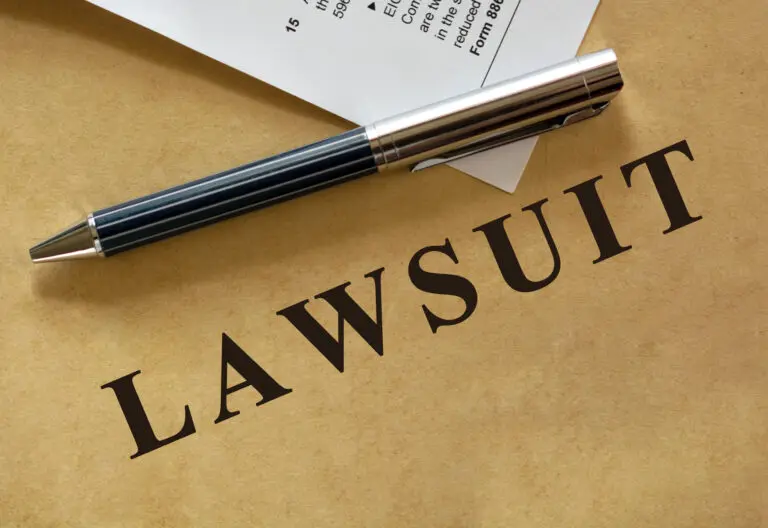Countervailing duties (CVDs) are tariffs imposed on imported goods to counteract subsidies provided to producers or exporters in the exporting country. These duties are designed to level the playing field for domestic producers who might otherwise be at a competitive disadvantage due to the foreign subsidies. In this article, we will explore the intricacies of countervailing duties, their implementation, and their significance in international trade law.
Understanding Countervailing Duties
Countervailing duties are an essential tool in international trade policy. They are implemented to neutralize the negative effects of subsidies granted by foreign governments to their domestic industries. Subsidies can take various forms, including direct cash payments, tax breaks, low-interest loans, and government-provided goods and services at reduced prices. These subsidies can distort international trade, leading to unfair competition and harming domestic industries in the importing country.
To address these issues, countries can impose countervailing duties on subsidized imports. These duties are calculated to offset the amount of the subsidy, thereby eliminating the unfair advantage gained by the foreign producers. The process of imposing countervailing duties involves a thorough investigation by the importing country’s trade authorities to determine the existence and extent of the subsidy and its impact on the domestic industry.
The Legal Framework for Countervailing Duties
The legal basis for countervailing duties is established under the World Trade Organization (WTO) agreements, particularly the Agreement on Subsidies and Countervailing Measures (SCM Agreement). The SCM Agreement outlines the rules and procedures for identifying and addressing subsidies and provides guidelines for the application of countervailing measures.
Under the SCM Agreement, subsidies are classified into three categories:
- Prohibited Subsidies: These include subsidies contingent on export performance or the use of domestic goods over imported goods. Such subsidies are considered harmful to international trade and are prohibited outright.
- Actionable Subsidies: These subsidies may be challenged if they cause adverse effects to the interests of another member country. Adverse effects can include injury to the domestic industry, nullification of benefits under the GATT 1994, or serious prejudice to the interests of another member.
- Non-Actionable Subsidies: These are subsidies that are generally permitted, such as those for research activities, regional development, and environmental protection.
The Process of Imposing Countervailing Duties
The process of imposing countervailing duties involves several steps, including:
- Petition Filing: Domestic industries or producers who believe they are adversely affected by subsidized imports can file a petition with their government’s trade authorities.
- Investigation: The trade authorities conduct a detailed investigation to determine the existence and extent of the subsidy and its impact on the domestic industry. This investigation involves collecting evidence, conducting hearings, and analyzing the economic effects of the subsidy.
- Preliminary Determination: Based on the investigation, the authorities make a preliminary determination on whether the subsidy exists and whether it has caused injury to the domestic industry. If the preliminary determination is affirmative, provisional countervailing duties may be imposed.
- Final Determination: After further investigation and analysis, the authorities make a final determination. If the final determination confirms the existence of the subsidy and the injury, definitive countervailing duties are imposed.
- Review and Enforcement: Countervailing duties are subject to periodic review to ensure their continued relevance and effectiveness. The authorities may also take enforcement actions to ensure compliance with the duties.
Impact of Countervailing Duties on Trade
Countervailing duties play a significant role in maintaining fair competition in international trade. By neutralizing the effects of subsidies, these duties help protect domestic industries from unfair competition and promote a level playing field. They also encourage foreign governments to reconsider the use of harmful subsidies and promote fair trade practices.
However, the imposition of countervailing duties can also lead to trade disputes and retaliation. Countries affected by countervailing duties may challenge them through the WTO dispute settlement mechanism. These disputes can result in lengthy legal battles and strain trade relations between countries.
Case Studies of Countervailing Duties
Case Study 1: Steel Industry
One notable example of countervailing duties in action is the U.S. steel industry. Over the years, the U.S. has imposed countervailing duties on steel imports from several countries, including China and India, to counteract subsidies provided to their steel producers. These duties have been instrumental in protecting the U.S. steel industry from unfair competition and preserving jobs.
Case Study 2: Solar Panels
Another significant case involves the imposition of countervailing duties on solar panels imported from China. The U.S. government determined that Chinese solar panel manufacturers received substantial subsidies from their government, allowing them to sell their products at artificially low prices. The imposition of countervailing duties helped level the playing field for U.S. solar panel manufacturers and encouraged fair competition in the renewable energy sector.
Retos y controversias
While countervailing duties are an important tool for addressing unfair trade practices, they are not without challenges and controversies. Some of the key issues include:
- Complexity of Investigations: The process of investigating subsidies and determining countervailing duties is complex and resource-intensive. It requires significant expertise and cooperation from various stakeholders.
- Retaliation and Trade Wars: The imposition of countervailing duties can lead to retaliation from the affected countries, resulting in trade wars and increased protectionism.
- Impact on Consumers: Countervailing duties can lead to higher prices for imported goods, affecting consumers and downstream industries that rely on these imports.
The Future of Countervailing Duties
The future of countervailing duties will likely be shaped by evolving trade dynamics and geopolitical considerations. As countries continue to navigate the complexities of international trade, the role of countervailing duties in maintaining fair competition will remain critical. However, there will be ongoing debates about the best ways to balance the interests of domestic industries, consumers, and international trade partners.
Countervailing Duties and Global Trade Policy
The role of countervailing duties in global trade policy cannot be overstated. These measures are part of a broader set of tools that governments use to manage international trade relationships and protect their domestic economies. The effectiveness of countervailing duties depends on the ability of governments to conduct thorough investigations and enforce compliance with WTO rules.
In recent years, there has been an increase in the use of countervailing duties as countries seek to protect their industries from unfair competition. This trend reflects broader concerns about trade imbalances and the impact of globalization on domestic economies. As countries become more interconnected through trade, the need for effective trade remedies like countervailing duties becomes more pronounced.
Countervailing Duties and Economic Policy
Economic policy considerations also play a significant role in the implementation of countervailing duties. Governments must weigh the benefits of protecting domestic industries against the potential costs of higher prices for consumers and strained trade relationships. This balancing act requires careful analysis and strategic decision-making.
For example, the imposition of countervailing duties on steel imports may protect domestic steel producers and preserve jobs in the steel industry. However, it may also lead to higher costs for industries that rely on steel as an input, such as construction and manufacturing. Policymakers must consider these trade-offs when designing and implementing countervailing measures.
Countervailing Duties and Legal Challenges
Legal challenges to countervailing duties are common in the international trade arena. Countries that are subject to these duties often challenge their legality through the WTO dispute settlement mechanism. These disputes can be complex and involve detailed legal and economic analysis.
One notable example is the dispute between the U.S. and China over countervailing duties on Chinese solar panels. China challenged the duties, arguing that they were inconsistent with WTO rules. The WTO ultimately ruled in favor of China, leading to the removal of the duties. This case highlights the importance of adhering to international trade rules and the role of the WTO in resolving trade disputes.
Conclusión
Countervailing duties are a vital component of international trade policy, providing a mechanism to counteract the adverse effects of foreign subsidies and promote fair competition. Understanding the marco jurídico, process, and impact of countervailing duties is essential for businesses, policymakers, and trade professionals. As global trade continues to evolve, countervailing duties will remain an important tool in ensuring a level playing field and protecting domestic industries from unfair competition. By addressing the challenges and controversies associated with these duties, countries can promote a fair and balanced international trade system that benefits all stakeholders.
Attorneys.Media Video Document References
- Is Personal Injury Part of Your Law Practice?
- As an Attorney, How Are You Generating Content for Your Online Presence?
- How Can You Help Potential New Clients Get Their Questions Answered?
- How Do You Differentiate Yourself When Someone Looks Online for Help?
- How Do You Differentiate Yourself as a Criminal Defense Attorney?
- Have You Been Thinking About Video Marketing for Your Law Firm?
- Should Attorneys Use Video Marketing to Attract New Clients?
- What Do Potential Clients See When They Research Your Name Online?
- Cómo puede ayudarle Attorneys.Media









